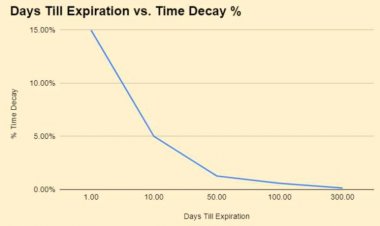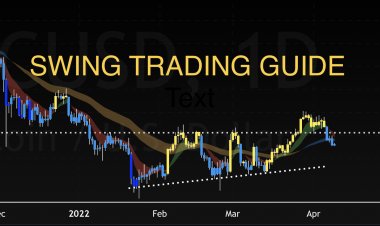Weekly Options Vs Monthly Options | Key to Picking the Right Option!
When it comes to trading options, you can make a few different choices. For example, you can trade Weekly Options, Monthly Options, or even longer-term options. But which is the best option for you? In this blog post, we will explore the pros and cons of each type of option and help you choose the right one for your trading style!

What are weekly options and monthly options?
The hardest part of options trading is figuring out the difference between weekly vs monthly options. There are many choices for the trader regarding the option chain, and the choices made can significantly impact their portfolio. Therefore, breaking down what these two options' expiration dates mean is essential.
Weekly options are options that expire on the Friday of each week. A monthly option expires once a month. Some option chains only contain monthly options, like the example below. The underlying stock M.E. has options that only expire once a month.
While an underlying stock like DKNG has options that expire weekly and monthly, as seen in the picture below.
Why do some stocks only have monthly options?
There are various reasons some stocks have option chains with ONLY monthly expirations. The most common reasons are listed below:
- The stock is new to the market
- The stock doesn't have a lot of volume
- The monthly options don't have a lot of volume or open interest
Stocks missing weekly options aren't popular enough yet. If they increase in volume, traders will see the addition of weekly options. Until then, the stock options can only be traded once a month. The decision to add new options is usually decided by the Chicago board options exchange or the CBOE.
The volume of Weekly and Monthly Options
A weekly option tends to have the most consistently high volumes, benefiting options traders. There is a higher volume and open interest for shorter-term options when most traders are likely to exit the positions they have been holding. When the expiration date approaches, these traders are likely to close or roll positions.
Most short-term traders will use a weekly option to scalp or swing trade. These traders provide increased liquidity as these options offer the best risk to reward them. These two main reasons make weekly options some of the best regarding volume, which means tight spreads and less money lost entering and exiting. Unfortunately, monthly options don't have this perk and can be extremely difficult to get filled on. This illiquidity makes it easier for the trader to lose money which can be frustrating.
Time Value of Weekly and Monthly Options
The value of an option is mainly determined by how much time there is till expiration. Every single day options decay in value in the amount of theta. So if there are 30 days till expiration, the option has 30 days of time value in the price, making it very expensive to buy. While an option with seven days till expiration has less time value making it a cheaper choice.
To further illustrate how much time value affects the price of an option, we will look at different expiration dates for a DKNG Call option with a strike price of $19.50:
- 7 Days till Expiration Costs $54
- 14 Days till Expiration Costs $81
- 30 Days till Expiration Costs $106
- 60 Days till Expiration Costs $176
- 90 Days till Expiration Costs $217
As you can see, the same option can cost four times as much for an extra 83 days till expiration. The difference in prices offers unique opportunities we will discuss next.
Option Leverage Differences
As shown earlier, the same strike price option can cost four times as much! This means that the trader receives the same amount of leverage for the option for an increased price which leads to lower returns.
To further illustrate below how low the returns are as the expiration date increases, we will break down the math on the return the option has for a $1 move:
- 7 Days till Expiration returns 95%
- 14 Days till Expiration returns 60%
- 30 Days till Expiration returns 48%
- 60 Days till Expiration returns 30%
- 90 Days till Expiration returns 23%
The best way to calculate time decay per day is to look at the delta value from the brokerage platform. In the picture below, the delta is $0.45, while the option premium is $0.81. This means that the option will gain a $45 per dollar move, around a 60% return.
As you can see, the same option could give a return of almost 100% or 23%. The difference is how much time value the option contains. The higher the amount of time value, the lower the returns because most of the cost of the option is time value, and less is connected to the leverage.
Options close to expiration can be highly lucrative because of this, and that is why most traders will avoid options too far from expiration.
Option Time Decay Per Day
There is a significant downside to short-term options which may outweigh the possible returns, which is the time decay per day. As we know, time decay is the amount the option loses in value every single day, holding given that the price and volatility don't change. This is the cost of getting this type of leverage in the market, which doesn't come free.
Time decay isn't as simple as just losing X amount per day. Unfortunately, options exponentially speed up and lose value in the last 30 days till expiration.
To further illustrate below how high the losses are as the expiration date decreases, we will break down the math on the loss of holding an option overnight:
- 7 Days till Expiration loses 10%
- 14 Days till Expiration returns 4%
- 30 Days till Expiration returns 2%
- 60 Days till Expiration returns 1.5%
- 90 Days till Expiration returns 1%
The best way to calculate time decay per day is to look at the value of theta from the brokerage platform. In the picture below, theta is -$0.05, while the option premium is $0.54. This means that the option will lose $5 per day, which is around 10% of the total cost of the option.
As you can see, the same option could lose as much as 10% every single day. They were making short-term options extremely risky. If the stock happened to move in the wrong direction, these losses could be close to 50-70% in hours.
While weekly options strategies benefit from higher returns per dollar move, this comes at a high price as these options decay exceptionally quickly. The trader has to balance between time value and leverage. Too much time and the trader misses good returns, while not enough time can soon lead to options going to zero.
How to Take Advantage of Time Decay
Option decay may seem scary, but this is a massive opportunity for selling options. The act of option selling is shorting an option and hoping for the value to decrease. When the value drops, the trader can buy it back for a profit or let it expire worthless. This allows the trader to profit from the fact that most options 7-30 days until expiration go zero. The most popular ways to sell options include covered calls, cash-secured puts, short iron condors, credit spreads, and more.
Covered Call: When a trader sells a call option against the stock they own to generate income. Weekly or monthly covered calls can be used, and the differences will be discussed below.
Cash-Secured Put: When a trader sells a put option against the cash they own to generate income.
Credit Spreads and Iron Condors: These strategies can be pretty complex but mainly involve buying and selling an option at the same time to produce a credit. Credit is the amount of money a trader will receive if the options expire worthless by the expiration dates.
This is different from writing covered calls because there is less capital required when a trader buys an option that is essentially the same as owning the stock.
While the example above shows the exponential increase in time decay per day, some options have even higher daily losses. These losses could be as close to 20-50% of the value of the option in one single day, especially if the options are considered out of the money. That could be an impressive paycheck if the trader understands the risk.
There is an option selling screener on the internet that helps find these options. One of our favorites is BreadAlerts, created for options traders and option sellers. As you can see in the screenshot below, you can sort by covered calls with the highest return on capital! This platform shows weekly covered calls, but many traders will also look to sell monthly covered calls.
The critical difference between Weekly Vs Monthly Options?
As we wrap up the article, let's overview the critical difference between Weekly Vs Monthly Options:
Returns
- Weekly Options offer higher returns per dollar move
- Monthly Options offer lower returns per dollar move
Decay
- Weekly Options offer higher time decay per day
- Monthly Options offer lower time decay per day
Volume
- Weekly Options offer higher volume and liquidity
- Monthly Options offer lower volume and liquidity
When to use weekly and monthly options?
Next, let's dive into some examples where a trader might want to use weekly or monthly options.
The trader believes the stock will move higher today
In this scenario, trading weekly options would be better as they offer higher returns, and if the trader were to exit the same day, the effects of time decay would be minimal.
The trader believes the stock will move higher in the next 3-5 days
In this scenario, monthly options would be better as the options will lose less value and allow the trader to take advantage of a longer-term move.
The trader believes the stock will trade sideways.
The trader can sell options and collect the premium from decay through covered calls or cash-secured puts in this scenario. Monthly or weekly options will work for this example because monthly options have more value to lose for the trade, while trading weekly options can decay quicker. This is up to the trader's preference on which expiration would work best for them.
Trade with us!
Looking for a more sophisticated and educational options trading experience, look no further than "Market Moves Premium Options Trading Group." Our exclusive 7-day membership offers swing trading set-ups, fast text signals, and +100 hours of educational content. Plus, you'll have access to live trading sessions twice per day. So if you're ready to take your options trading to the next level, join us today!
Financial Disclaimer: Market Moves LLC is a company that provides education in financial and stock market literacy. WE ARE NOT FINANCIAL ADVISORS. In fact, it is illegal for us to provide any financial advice to you. Under U.S. law, the only persons who can give you financial advice are those who are licensed financial advisors through the SEC. Results shown from Market Moves LLC or customers who use our product and/or service are individual experiences, reflecting real-life experiences. These are individual results, and results do vary. Market Moves LLC does not claim that they are typical results that consumers will generally achieve. Past performance does not guarantee future results. You should not rely on any past performance as a guarantee of future investment performance.












![Roth IRA Options Trading [Full Overview]](https://tradewithmarketmoves.com/uploads/images/2022/05/image_380x226_62704709195c1.jpg)






